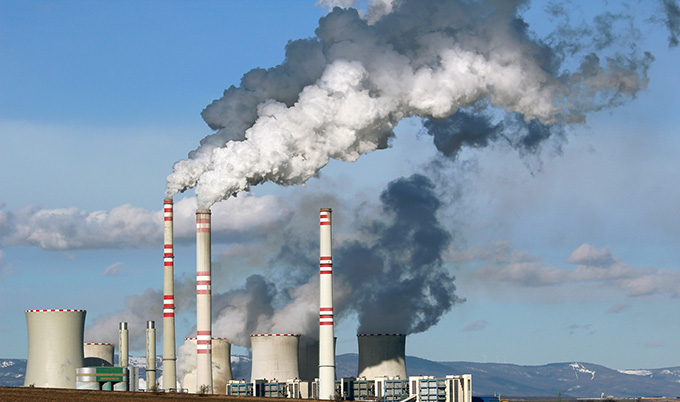May 4 2020
Researchers at Newcastle University have designed a new kind of self-forming membrane to isolate carbon dioxide (CO2) from a mixture of gases.

Image Credit: Newcastle University.
The membrane functions similar to a coffee filter, permitting safe gases like nitrogen to release into the air, following which CO2 can be processed.
The researchers think that the system could be used in the separation processes of carbon dioxide, either in reaction engineering or to safeguard the environment.
The researchers developed the membrane’s costly portion, which is made of silver, during the operation of the membrane. Thus, there was a considerable reduction in the need for silver as well as the membrane cost.
The study was published in the Energy and Environmental Science journal.
We didn’t build the entire membrane from silver, instead we added a small amount of silver and grew it within the membrane adding the functionality we desired. Most importantly, the performance of the membrane is at the level required to be competitive with existing carbon capture processes—in fact, it would likely reduce the size of the equipment required significantly and potentially lower operating costs.
Dr Greg Mutch, NUAcT Fellow, School of Engineering, Newcastle University
What is Carbon Capture and Why is it Necessary?
Climate change is mainly caused due to carbon dioxide emissions. At present, the earth’s climate is nearly 1 °C warmer compared to the pre-industrial times. Enough carbon dioxide has already been emitted to warm the planet by over 1.5 °C (there is a lag between warming and emissions). International agreements are in place to guarantee that this does not exceed more than 2 °C.
A more than 2 °C warming will have destructive impacts, such as negative effects on food availability, human health, and surrounding, as well as large-scale migration. New materials and processes are the needed of the hour to decrease the amount of CO2 emitted into the atmosphere—such technologies are named carbon capture and storage (CCS).
Despite the huge measures taken with electric vehicles and renewable energy, still, the planet is mostly driven by fossil fuels, and it is not so easy to decrease that contribution in time to restrict warming below 2 °C.
Moreover, huge modeling exercises, for example, by the Intergovernmental Panel on Climate Change, have often shown that the most efficient method to slow down global warming involves a considerable amount of CCS (in the mix with, for example, renewable energy technologies).
The Self-Forming Membrane
As part of a technique that was never attempted before and reported recently, researchers used aluminum oxide supports in tubular and pellet form to develop the silver membrane. After adding silver to the membrane, the conditions encountered at the time of operation pushed the silver to grow inside the membrane, enabling higher performance.
The researchers employed X-ray micro-computed tomography and observed the inner composition of the membrane. They confirmed that the permeation of O2 and CO2 triggered self-assembly of silver dendrites.
Most significantly, using permeation measurements, the membrane’s performance was found to be at the level needed to be competitive with the present processes of carbon capture. The membrane’s permeability was one order of magnitude greater than what was needed, and the CO2 flux was the highest achieved for this kind of membrane.
These savings are important—the cost of carbon capture is one of the key factors limiting uptake of the technology. There is a common metric for membrane performance—the ‘upper bound’. As our membrane relies on a unique transport mechanism, we avoid the limitations of most membrane materials and go far beyond the upper bound.
Dr Greg Mutch, NUAcT Fellow, School of Engineering, Newcastle University
“We hope that this study inspires new ways to form membranes, that lower costs, as well as drives interest in this new class of membrane for future application to protect our environment,” added Dr Mutch.
Journal Reference:
McNeil, L. A., et al. (2020) Dendritic silver self-assembly in molten-carbonate membranes for efficient carbon dioxide capture. Energy & Environmental Science. doi.org/10.1039/C9EE03497H.